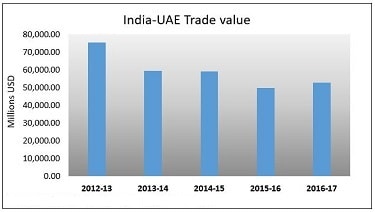OUR GLOBAL PRESENCE
Emirates and India
BUILDING ON A LONG-TERM RELATIONSHIP
In October 1985, Emirates launched flights from its Dubai hub to Delhi and Mumbai; these flights formed the base of its initial route network. Since then, we have invested in and progressively grown our Indian operations. Today, we operate 172 flights to India every week serving nine destinations: Ahmedabad, Bengaluru, Chennai, Delhi, Hyderabad, Kochi, Kolkata, Mumbai, and Thiruvananthapuram.
Read more about Emirates’ operations in India in our factsheet Emirates and India(opens a PDF in a new tab).
OUR ECONOMIC IMPACT IN INDIA
Economic impact of Emirates flights
A 2012 study by the National Council of Applied Economic Research (NCAER), India's premier economic institution specializing in policy research, outlines the impact of Emirates’ services on the Indian economy and assesses the benefits that additional services would provide.
This substantial report from NCAER is an objective analysis of our operations in India, our most important international destination with 176 weekly flights. NCAER found that our operations contribute more than US$596 million to India’s GDP, support more than 72,000 Indian jobs, and generate US$1.153 billion in foreign exchange earnings. In its comprehensive analysis, NCAER quantifies our contribution to the Indian economy and the value of global connectivity and also models the benefits that would result from lifting the current restraints on capacity and destinations served.
In 2014, the aeronautical authorities of India and the UAE negotiated the first expansion of seat entitlements since 2008. As a result, Dubai-based carriers were awarded an additional 11,000 seats per week. In 2015, NCAER produced another study that models the economic value of this increase in seats and potential future bilateral increases. NCAER’s updated analysis found that with an enhanced capacity of 6,000 seats per week, our operations would contribute an additional $848.6 million to India’s GDP and support more than 86,000 jobs.
Download report "Emirates' Operations in India" PDF (0.64 MB)(opens a PDF in a new tab)
CONNECTING INDIA WITH THE WORLD
Global connectivity
Of the 5.5 million passengers who traveled to or from India with Emirates in 2017, 88% traveled from Dubai or points on Emirates’ global network that are not currently served by Indian carriers. When comparing route networks, Emirates and Indian carriers only competed directly on 24 points, which contributed just 12% of Emirates’ India traffic.
A 2011 Oxford Economics paper, "Economic Benefits from Air Transport in India," found that India ranked 45th in air connectivity and that a 10% increase in connectivity would boost Indian GDP by US$783 million. Since January 2012, we have launched more than 30 new destinations worldwide, 24 of which are likely points for connecting to or from India. Of these 24 destinations, only one is currently served by Indian carriers, which reinforces the importance of the relationship between Emirates and India.
FUELING GROWTH IN TRADE ROUTES
A partner in trade
In 2017, we carried more than 338,000 tons of freight, 59% of which was to or from non-hub airports, greatly benefitting regional economies, particularly around the six non-hub points in southern India. A 2011 Oxford Economic study also found that 65% of India’s air freight went to MENA (34%) and Europe (31%), where our network has more than 100 daily flights in each direction.

Source: Government of India, Department of Commerce
FOCUSING ON FLIGHT CAPACITY
Growth in the market
The current bilateral agreement with India restricts our flight capacity, resulting in only marginal capacity growth—just 0.9% since 2012.
In 2017, Emirates’ India services operated with an average seat factor of 86%.
NCAER’s analysis of our 2013–2014 passenger traffic on Indian routes indicates that during this period, Emirates did not increase the number of passengers carried to and from India in comparison to the previous year. In fact, there was a 2% reduction from the previous year. There was no increase in capacity entitlement for UAE carriers under the bilateral agreements between 2008 and 2013–2014, which we believe deprived airports and passengers of the benefits that come with additional flights.


